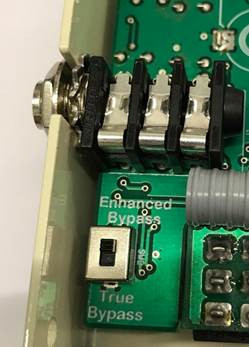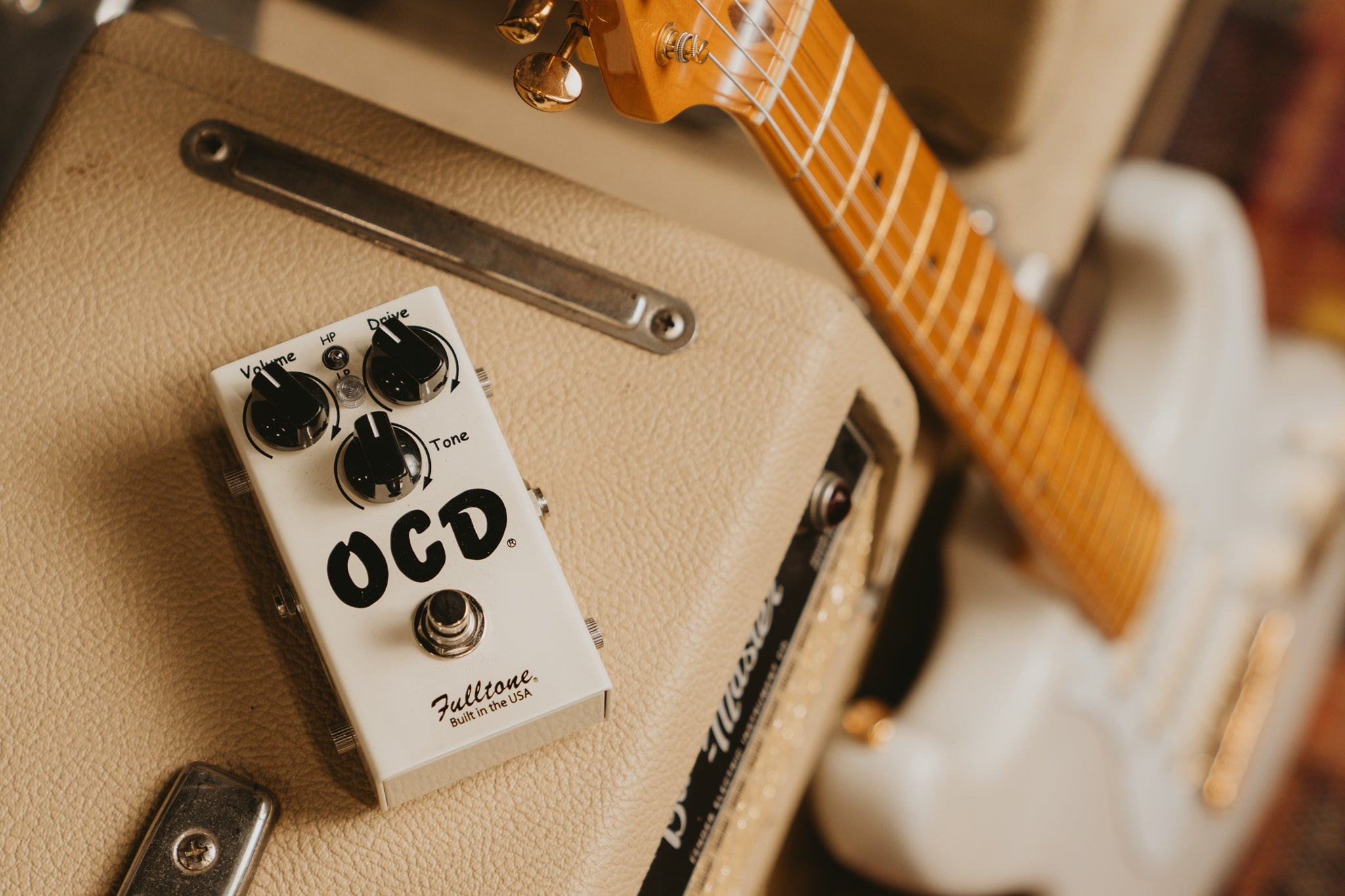The Fulltone OCD (Obsessive Compulsive Drive) has long held a revered position on pedalboards worldwide. Known for its dynamic responsiveness and amp-like overdrive, it’s a go-to for guitarists seeking that sweet spot between clean boost and gritty distortion. The latest iteration, the Fulltone OCD V2 guitar pedal, builds upon this legacy, introducing key enhancements aimed at optimizing performance in modern pedalboard setups while retaining the core tone that players love.
What exactly makes the OCD V2 stand out, and how does it improve upon its already acclaimed predecessor? Let’s dive into the details of this iconic Guitar Pedal Ocd and explore the features that solidify its place as a top contender in the overdrive pedal market.
The Enduring Essence of the OCD: What Remains the Same
Despite the “V2” designation, Fulltone emphasizes that the OCD’s fundamental design philosophy remains consistent. Since its inception in 2004, the OCD has undergone subtle refinements, but the core DNA has always been there. The OCD V2 continues to utilize the innovative elements that defined the original, ensuring the signature sound is preserved.
One of these key elements is the use of MOSFETs (Metal-Oxide-Semiconductor Field-Effect Transistors) as clipping devices. The OCD was a pioneer in employing MOSFETs in a unique “hard clippers connected to v-ref” configuration, diverging from the more common connection to ground. This specific arrangement is crucial to the OCD’s celebrated touch-sensitivity. It’s this design choice that allows the pedal to react dynamically to a player’s picking nuances, transitioning smoothly from subtle grit to full-blown overdrive based on pick attack and guitar volume. This responsiveness is a major factor in why the OCD feels and sounds distinct from many other overdrive pedals, a significant portion of which are often variations on the Tube Screamer circuit.
OCD V2: New Features Designed for the Modern Guitarist
While the core tone is preserved, the OCD V2 introduces several significant new features specifically addressing the needs of today’s guitarists and their complex pedalboard setups. These enhancements focus on signal integrity and dynamic response, ensuring the OCD V2 performs optimally regardless of its position in the signal chain.
Output Buffer: Maintaining Signal Integrity
A standout addition to the OCD V2 is an output buffer. This buffer is engaged whenever the pedal is switched on in True-Bypass mode, and is always active in Enhanced Bypass mode. The primary function of this buffer is to isolate the OCD from the effects that follow it in the signal chain.
In practical terms, this means that the OCD’s tone remains consistent and unaffected by the impedance and loading of subsequent pedals, loopers, or long cable runs commonly found in elaborate pedalboards. This is a crucial feature for maintaining clarity and preventing tone degradation in complex rigs. Furthermore, this output buffer brings an unexpected sonic benefit: by reducing the load on the pedal’s hard-clipping stage, it contributes to increased sustain and richer overtones.
Class A Discrete JFET Input: Enhanced Dynamics and Responsiveness
Another key upgrade in the OCD V2 is the implementation of a Class A configured discrete 2N5457 JFET input section. This modification significantly raises the input impedance to 1 mega ohms, a substantial increase from the previous 330K ohms.
This higher input impedance results in enhanced dynamics and a more responsive interaction with both single-coil and humbucker pickups. Guitarists will experience a more open and articulate sound, with improved clarity and sensitivity to playing dynamics. The Class A configuration of the JFET input stage is a critical factor in achieving this enhanced responsiveness, mirroring the sought-after input stages of vintage gear known for their dynamic feel.
Enhanced Bypass: The Solution to Tone Loss
Perhaps the most groundbreaking feature of the OCD V2 is the introduction of Enhanced Bypass (EB). This innovative bypass mode, selectable via an internal switch, offers a superior alternative to both traditional True Bypass and standard buffered bypass systems. Crucially, switching between Enhanced Bypass and True Bypass is completely pop-free.
To understand the significance of Enhanced Bypass, it’s essential to consider the drawbacks of traditional bypass methods in modern pedalboard scenarios.
The Downsides of True Bypass in Complex Rigs
True Bypass (TB) was once considered the gold standard for preserving signal purity when a pedal is bypassed. However, in today’s world of extensive pedalboards, the accumulated length of cables, connectors, and the inherent impedance of numerous pedals can lead to significant signal and tone loss. The result can be a dull, uninspiring sound that lacks the vibrancy of a guitar plugged directly into a quality tube amplifier.
The Limitations of Unity-Gain FET Buffered Bypass
For decades, the pedal industry’s solution to signal loss in complex rigs has been unity-gain buffered bypass, commonly employing Field Effect Transistors (FETs) as unity-gain buffers, as seen in pedals from brands like Boss and Ibanez. While buffered bypass addresses the signal loading issue and eliminates switching pops, it introduces its own set of problems.
Fulltone’s research, using sophisticated test equipment, revealed that each unity-gain FET buffer actually cuts the gain, typically by 0.3 to 0.6 dB, primarily in the low-mids and bass frequencies. With two FET buffers per pedal (for input and output paths), this translates to a potential loss of 1dB to 2dB per buffered pedal. This subtle but cumulative loss contributes to a “tinny” sound, as the high frequencies remain while low-mids and bass are attenuated.
Even more critically, traditional unity-gain FET bypass kills dynamic pick response when the pedal is bypassed. This means the nuanced difference between soft and hard picking is diminished, even when the pedal is supposedly “out” of the signal chain. This dynamic compression is a major drawback for players who rely on their picking dynamics for expressive playing.
Enhanced Bypass: Restoring Dynamics and Tone
Fulltone’s Enhanced Bypass is designed to overcome the limitations of both True Bypass and traditional buffered bypass. By configuring both switching FETs in Class A, Enhanced Bypass restores and even enhances dynamic response. Class A operation, even with a minimal gain of 0.3 to 0.6 dB, amplifies dynamics, providing a greater range of expression than a direct guitar-to-amp connection.
The sonic benefits of Class A FET preamps are well-documented, particularly in vintage units like the EP-3 Echoplex and similar boosters. While players often intuitively appreciate the “magic” these units impart to their tone, the underlying reason is the Class A FET preamp. However, EP-3 preamps have downsides: they can introduce phase issues, boost treble, and cut bass. Fulltone’s Enhanced Bypass, in contrast, keeps the signal in-phase and maintains a neutral EQ.
With the OCD V2’s Enhanced Bypass, this dynamic enhancement is present whether the pedal is engaged or bypassed. Simply having the OCD V2 in the signal chain, even when turned off, can revitalize the overall sound of a pedalboard, adding vibrancy and power.
 Alt text: Fulltone OCD V2 pedal showcasing the Enhanced Bypass feature, highlighting its integration into modern pedalboards for optimal signal integrity.
Alt text: Fulltone OCD V2 pedal showcasing the Enhanced Bypass feature, highlighting its integration into modern pedalboards for optimal signal integrity.
Experience the Difference: OCD V2 in Action
The Fulltone OCD V2 represents a thoughtful evolution of a classic overdrive pedal. By retaining the beloved core tone and incorporating intelligent enhancements like the output buffer, Class A JFET input, and especially the revolutionary Enhanced Bypass, Fulltone has created a guitar pedal ocd that is not only sonically exceptional but also perfectly suited for the demands of contemporary guitar rigs.
The difference between traditional bypass methods and Enhanced Bypass is truly significant. Guitarists are encouraged to experience the OCD V2 firsthand at their local dealer to fully appreciate the impact of these innovations. Hear and feel the enhanced dynamics, the maintained signal integrity, and the overall improvement in tone that the Fulltone OCD V2 guitar pedal delivers. It’s an upgrade worth experiencing.
 Alt text: Close-up of the Fulltone OCD V2 pedal’s controls, emphasizing its user-friendly interface and robust build quality for reliable performance.
Alt text: Close-up of the Fulltone OCD V2 pedal’s controls, emphasizing its user-friendly interface and robust build quality for reliable performance.
